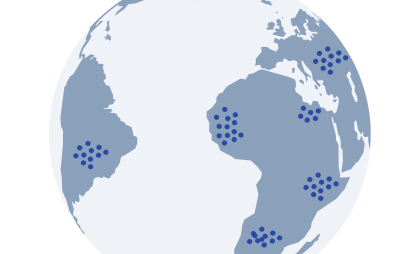This article will define what a pandemic is and provide readers with knowledge on the risks and impacts that arise. We’ll then provide information on how to stop the spread of pandemic flu.
From smallpox to the bubonic plague to the current headline-grabbing covid-19, pandemics have the power to instill concern and mistruths on a mass scale. Here we take a look into what a pandemic is, how one spreads, the stages and impact of an outbreak, and the key steps in preventing infection.
WHAT IS A PANDEMIC?
A pandemic is a large-scale outbreak of an infectious disease, spread over a wide geographical area. While an epidemic is the rapid spread of an infectious disease amongst a large number of people within the same population, a pandemic is of worldwide proportions. Pandemics can cause significant issues and disruptions within economics, politics, and society as a whole.
Coming from a blend of Latin and Greek, ‘pan’ means ‘all’ or ‘across’, while ‘demos’ means ‘people’ or ‘population’. Put simply, it’s a disease that spreads across many populations.

Evidence suggests that over the last century, the number of pandemics have risen. With global travel having become an everyday occurance, people are moving farther and wider all the time, sharing germs and infections along the way. Similarly, with the integration and urbanisation of land it’s little surprise that we see more outbreaks now than ever before. However, alongside the ease of travel has come the ease of communication, meaning we can get vital information and status updates on the disease to the masses quickly and efficiently.
WHERE DO THEY COME FROM AND HOW DO THEY SPREAD?
Animals like pigs and birds develop new viruses on a regular basis, usually without any cause for concern. When one of these animal viruses combines with a human virus it can begin to develop into a new illness. This can infect a handful of people each year.
Because us humans have never built up an immunity against the animal-viruses, concern only tends to rise within the healthcare community when humans start infecting one another. This is the stage at when the virus needs to be contained as best as possible, preventing it from spreading to large populations across the globe.
THE SIX STAGES
There is no designated time frame for a pandemic, with some lasting several months to many years. However, to get a firm grasp on the magnitude of the pandemic and its advancement, the World Health Organization (WHO) have developed six specific stages. Instead of relating to the number of people with the virus or how sick someone is, the stages look at where the virus is located and how it is spreading from area to area. The stages also take into consideration the type of virus strain and how much of an immunity humans will have against it.

Stage 1
No humans are infected and viruses circulate within animals only.
Stage 2
The virus strain has transferred from animal to human, causing a basic level of pandemic threat.
Stage 3
A small number of humans from the same area have contracted the virus. This means there’s a risk of the virus spreading if someone from outside the community comes into contact with an infected person. During this stage, the virus may be considered an epidemic.

Stage 4
A rise in both human-to-human and animal-to-human virus transmissions are causing outbreaks in numerous locations. This means a pandemic is more likely than but not a certainty.
Stage 5
A pandemic is considered imminent but most countries are not yet affected. This means health officials and governments should be ready to implement their pandemic mitigation plans.
Stage 6
With the virus now widespread, a global pandemic is official. Health officials and governments should be working to halt the spread and assist those affected.
Following the six stages, spreading of the virus should begin to lessen and health officials and governments can use this time to create a plan that aims to reduce a second wave.
IMPACTS OF AN OUTBREAK
The impacts of a pandemic outbreak can be felt beyond only the medical implications, causing social and economic disruptions as well.
The significant rise in morbidity and mortality is obvious, as is the rise in demand for doctors, and medication, and a potential overwhelming of hospitals. The threat of a pandemic can cause political instability, civil unrest, and behavioural changes that can affect the economy – like members of the public not feeling comfortable going to the office for fear of catching the virus. This reduction in workforce can lead to a reduction in output and have a knock-on effect across a large number of industries.
Additionally, the import and export of commodities may be halted, meaning food or medical products become in shorter supply. This can also cause stock and bond markets’ to behave erratically and lead to less investment.
HOW DO WE STOP THE SPREAD?
Pandemics sound scary and the threat of one should never be taken lightly. Once a pandemic spreads, vaccination – as soon as possible – is crucial. However, a new pandemic disease may not have a vaccine and creating one, along with implementing new production methods and infrastructures, could take anywhere from between four to nine months. This means that, as with everything, prevention is better than cure. There are several simple measures that can help stop the spread and keep populations safe and healthy.
Stay at home and isolated when sick. This sounds simple but it’s a vital step in stopping spreading the virus to others. Avoiding public gatherings, large crowds, or other contact with multiple people – like in schools and offices – can help keep the spread under control.
Keep your hands clean. Any time you prepare or eat food, use the toilet, blow your nose, cough, or sneeze, wash your hands with soap and water.
Take care of yourself. Maintaining good general health through a balanced diet, regular exercise, good hygiene, and plenty of sleep, will ensure a strong body that is more resilient in warding off infections.






